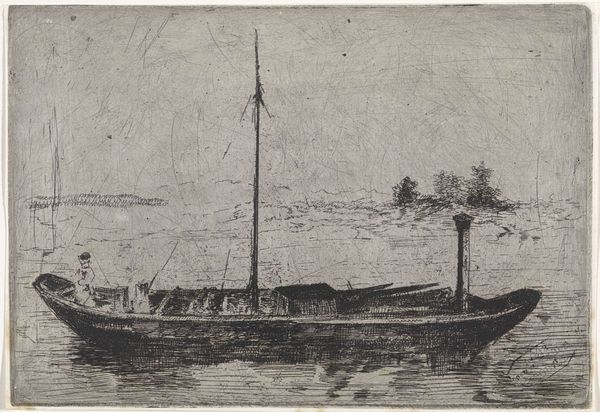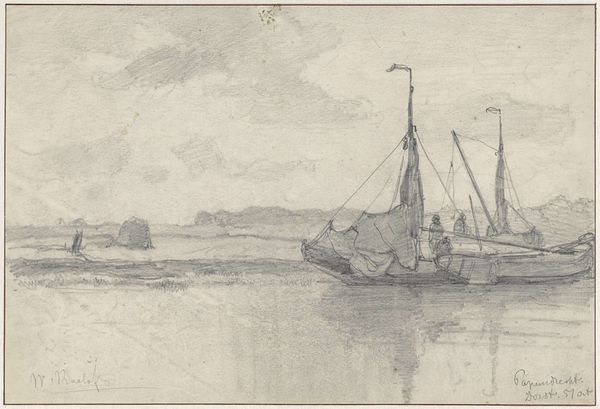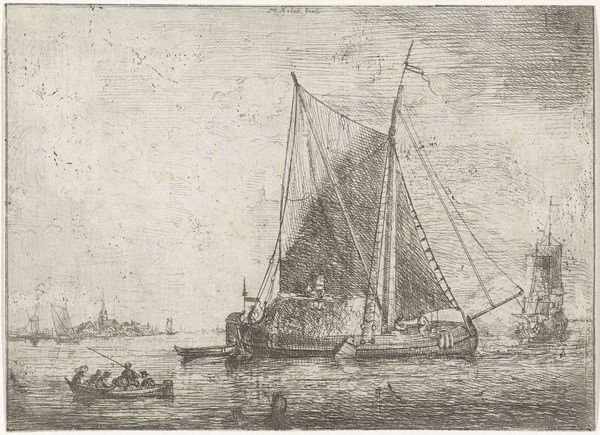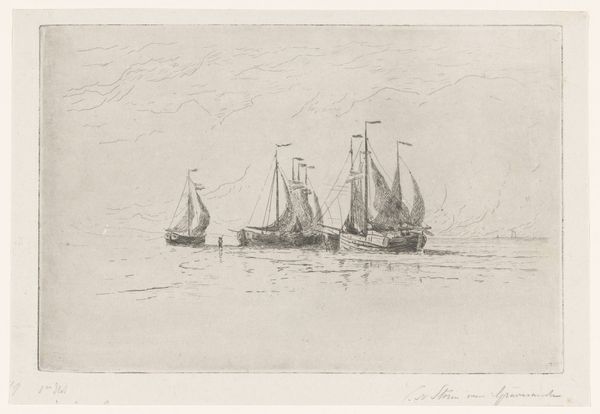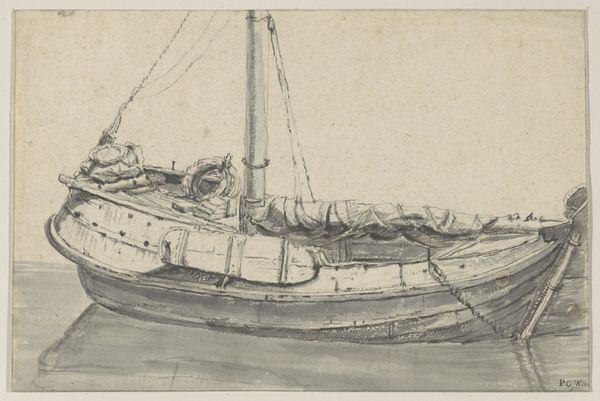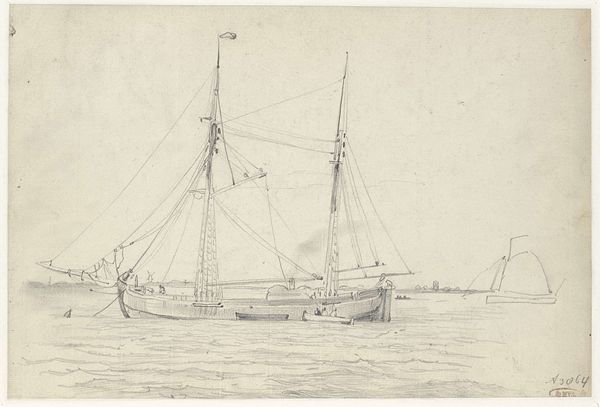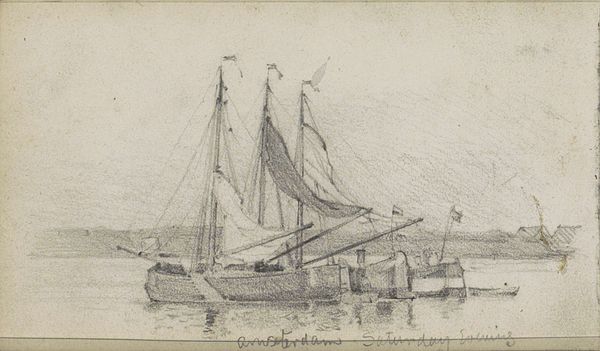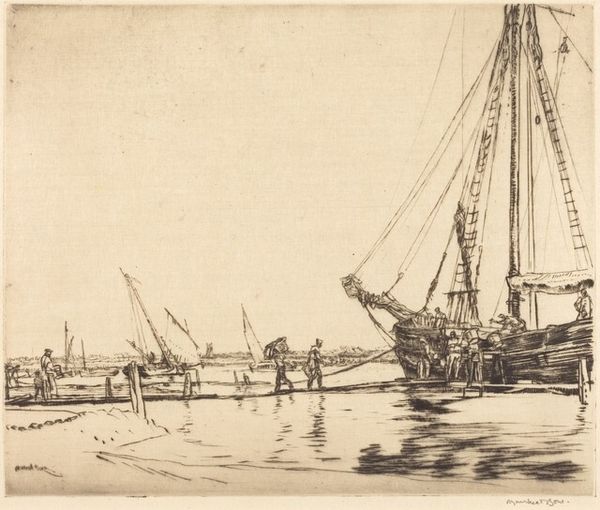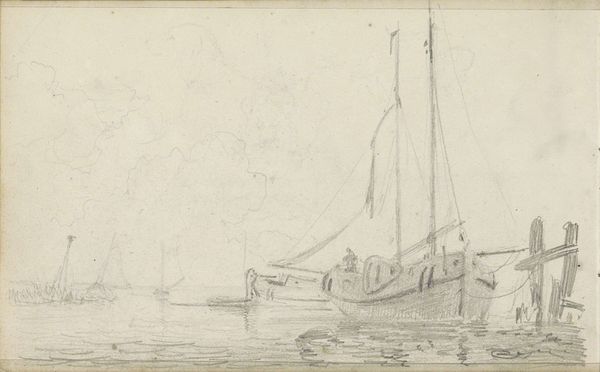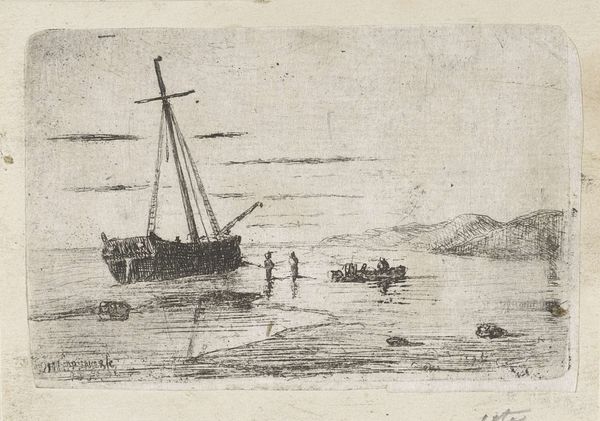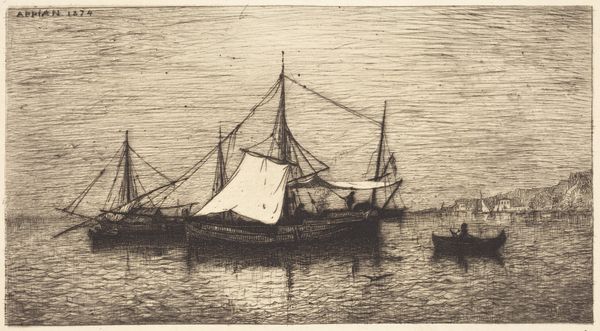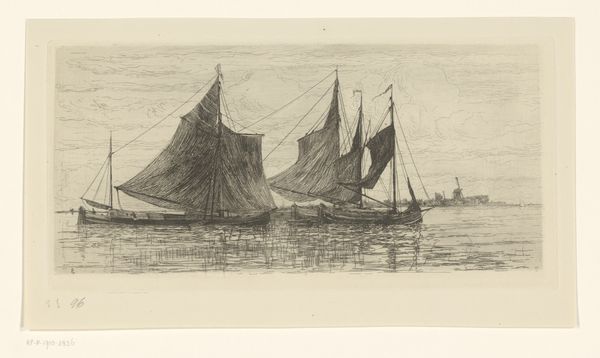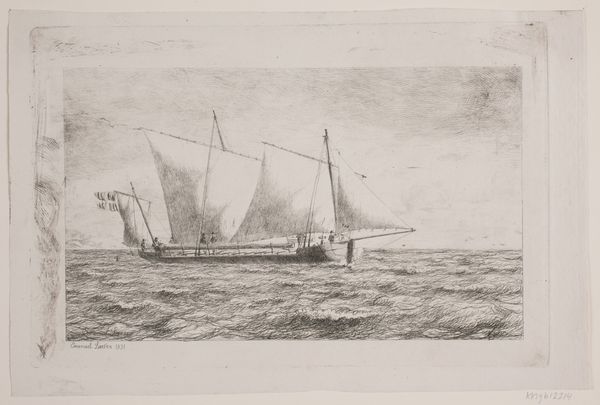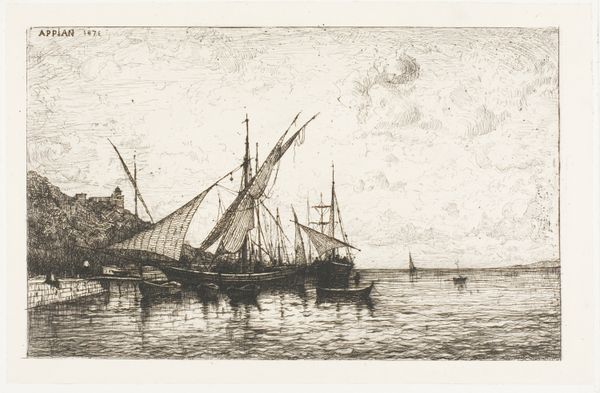
drawing, print, engraving
#
drawing
# print
#
pencil sketch
#
landscape
#
charcoal drawing
#
line
#
engraving
#
realism
Dimensions: height 133 mm, width 191 mm
Copyright: Rijks Museum: Open Domain
Editor: Here we have Arnoud Schaepkens' "Stoomboot," created sometime between 1855 and 1904. It's a drawing or print – possibly an engraving – depicting a steamboat on the water. It has such a quiet, almost melancholic mood. What do you see in this piece from a formal perspective? Curator: Immediately striking is the artist’s masterful use of line. Observe the fineness of the etched lines that define the boat's form, creating a subtle texture. Note how these lines, through their density and direction, articulate both the shape and the surface of the water. How does the linear structure influence the depth? Editor: I see what you mean. The density of the lines does seem to suggest the boat's three-dimensionality and the movement of the water, like ripples. But isn't the realism itself a formal element, creating a very legible representation? Curator: Precisely. Realism functions here not merely as representation, but as a structural component. It establishes a visual language we can readily decode. Also, examine the composition; the placement of the steamboat within the frame, its relationship to the horizon line, and the distribution of light and shadow, particularly how light shapes the water surface and fades into the sky. Editor: It’s very balanced. The steamboat is centered, but slightly off to the side, keeping it from being too symmetrical, the light is also coming from an angle, casting shadows that contrast against the shimmering water. Curator: Correct, these elements—line, texture, composition—work in concert to construct meaning and evoke this stillness, but we can consider that from another formal perspective, considering realism is one such structural principle, by embracing asymmetry within that realist framework. A deviation creates a dynamism that would otherwise remain dormant. This gives this landscape a powerful dynamic tension between tranquility and subtle disruption. Editor: That's fascinating. I had not thought of realism as a structural principle. Curator: Exactly, thinking formally allows us to dissect how such work can generate meaning, beyond historical analysis alone. What is key is that these structures impact our interpretations in ways that extend well beyond representation alone. Editor: I’ve definitely learned a new way of observing the structure of the art. Curator: Indeed. And I also like that you considered what these dynamics create to you. These visual analyses allow one to construct complex yet profound meanings to simple representational artwork.
Comments
No comments
Be the first to comment and join the conversation on the ultimate creative platform.
